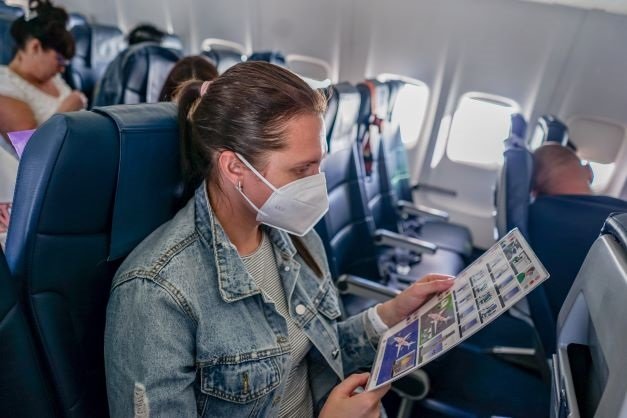How to Prevent Back Pain During a Long-Haul Flight to Singapore
The deceptively small island city-state of Singapore has long been a favoured destination for business and leisure travellers from all over the world, and it’s not hard to see why. Singapore’s thriving economy, well-developed public infrastructure and welcoming multicultural population are just a few factors that make it worth at least one visit. The city also enjoys a strategic geographical location in the heart of Asia, so it’s the perfect jump-off point for visitors aiming to explore the rest of this fascinating region.
Any frequent flier, however, knows that long-haul flights can leave you with terrible aches and pains. And the last thing you want is for back pain to put a damper on your excitement for your next Singapore trip. If you’re visiting from far away, a bit of preparation prior to flying and some smart pain prevention strategies midflight can help you mitigate some of the discomforts a long plane ride brings.
Try the following tips to ensure a pain-free landing in Singapore:
Exercise Regularly Before Flying
Seats on aeroplanes are relatively cramped and narrow outside of first or business class. If you haven’t been getting regular exercise for a long time, it’s likely that your back muscles will start to spasm from having to squeeze yourself into that tight space for hours. Try to pick up a simple workout or stretching regimen that you can follow regularly for at least a few weeks before you fly. And if you already have an established exercise routine, keep it up until the day of your trip to keep your muscles strong and limber during the flight.
Observe Proper Posture
Even if you fly coach and thus don’t have a lot of space, sitting up properly can help reduce some of the stress on your lower back.
Make sure your legs are bent at a right angle with your feet flat on the floor. Your knees should come to about the same height as your hips. If it’s difficult to achieve this position naturally, you can always ask a flight attendant for some extra pillows or blankets to sit on. You can also use these items to prop up your feet if necessary.
You may slouch involuntarily if you have to sit for a long time, which will compress the muscles and nerves in your lower back and cause back pain. Supporting your lower back with a back roll or even a few pillows is a good way to keep your spine in a straight, neutral position.
If your legs are too long to sit comfortably in a regular economy-class seat, consider requesting a seat by the bulkhead or the exit row. These seats typically afford more legroom and may allow you to position your legs more comfortably.
Move Around When You Can
Once your plane is cruising steadily, you should be allowed to get up and move around the cabin. While you probably shouldn’t stand in the aisle for long periods, it may help you to walk around and do some light stretching for a few minutes each hour. This will help ease any stiffness in your back muscles and restore some of their flexibility. Some simple stretches you can do while standing include just bending forward and backward as much as possible. You can also stretch your arms overhead to loosen up your shoulders and upper back.
Even when you absolutely have to stay in your seat, such as during periods of turbulence, moving and changing position frequently can ease any pain and discomfort you might be feeling. Pointing your toes upward, for example, can help stretch your calves, while pulling your knees up close to your chest will stretch the muscles of your buttocks. Besides reducing your risk of back spasms, these movements can also prevent harmful blood clots from forming, which is always a health concern on long-haul flights.
Take Pain Medication if Necessary
It’s never a bad idea to keep pain medication on hand if you know that you tend to get sore while on the go. Some over-the-counter options you can consider include acetaminophen and non-steroidal anti-inflammatory drugs (NSAIDs) like ibuprofen. You can even take these medications before you get on the plane to nip any possible pain and inflammation in the bud preemptively.
Whether you use prescription or OTC pain medication, it’s always good to consult your doctor about appropriate dosing to prevent withdrawal symptoms and other unpleasant side effects. You may also want to let the flight attendants know you’ll be on medication during the flight so they can keep an eye on you just in case.
Drink Lots of Water
The air in aeroplane cabins tends to be extremely dry, which can exacerbate back pain, joint stiffness, and other musculoskeletal issues. Take extra steps to stay hydrated a few days before your trip, and stay vigilant about it on the flight itself. You want to be drinking about 0.25 litres of water per hour at the minimum.
Although back pain may seem inevitable on long-haul flights, taking concrete steps to minimise it will help you travel much more comfortably. As long as you look after yourself proactively on your flight, you’ll touch down refreshed and ready to make the most of your time in the Lion City.

